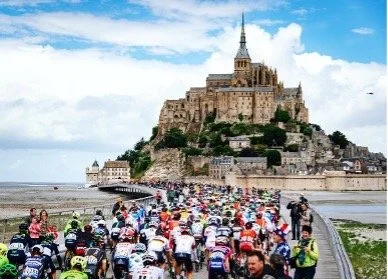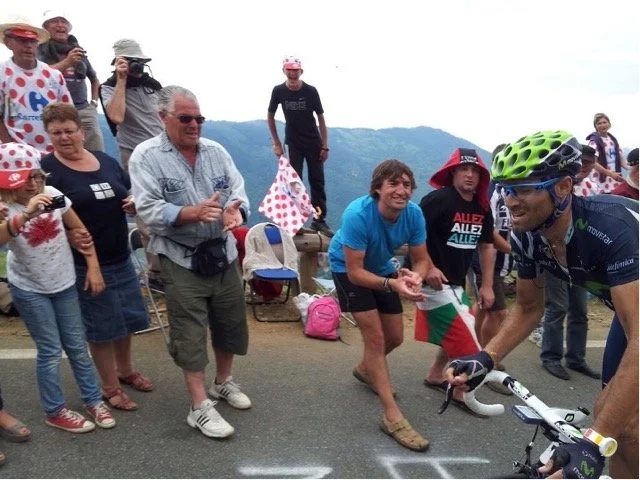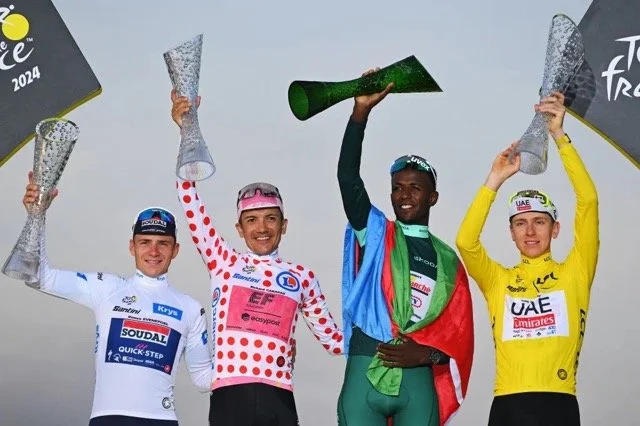Watching the Tour de France can Make you a Better Cyclist
The Tour de France is the world's largest annual sporting event. Spanning three weeks and covering over 2000 miles, it is a grueling physical challenge. The Tour de France is the race every cycling fan watches, bar none!
Ashley Gruber -- https://www.instagram.com/p/BHX5tyIANjX/
Each year, a Bicycling magazine article compares a Tour de France Rider with a casual cyclist. Reading about the difference is one thing, seeing the pros make climbing look easy is even more breathtaking.
Indoor cyclists can learn a thing or two by watching the world’s greatest cyclist sprint, climb and time trial across France. Below, I share a few examples:
1. Gain a Better Understanding of Cadence: Indoor cycling tends to overemphasize cadence (how fast you turn the pedals) and underemphasize resistance (the force required to turn the pedals). 184 of the best riders in the world, including five Americans, across 23 teams, are participating in this year’s race. Teams have specific philosophies and training methods. The rider's pedaling style is always unique. The common goal is to perfect YOUR pedal stroke, what the French call “souplesse.”
Elegantly defined in Road.cc magazine: “Souplesse is something hard to describe, but easy to witness. It is… a smoothness, a fluidity, a level of effortless pedalling, even when there might be a lot of effort going in.” You will quickly notice the varied pedaling styles and may start to discover your version of souplesse. It’s not one size (or style) fits all!
Alejandro Valverde of Spain. Photo by Pete Van Riper
2. Being a willing sufferer
Cycling is about introducing your body to stress and having it respond elegantly. When outdoors, the option to turn the resistance down is removed from the equation. You either pedal or walk. Of the 184 riders, the majority of them will never hear their name called during the televised coverage.
One of the team roles is the domestique. They protect the team leader from the wind on flats, place them on an incline, or drop back to the team car, and load their jersey with water bottles to hand out to teammates. These riders push their bodies to the limit and rarely get the spotlight. Suffering for others is a truly noble act. Next time you’re on the bike, dedicate the hill climb to someone else.
“An amateur should think long and hard before attempting one of these Tour de France stages. Two would probably necessitate visiting a doctor, and three would require a psychiatrist - any more and you should be checking if that person has written a will!”
3. Cycling Strategy makes Riding More Interesting: Learning individual and team tactics in cycling, like any sport, changes the way you watch, and ultimately play. Cycling teams may ride in pacelines (where one rider leads and others share their draft), attack on hills, or jump to the front and control the race with their power. Individual riders may get a chance to break away from the group (called the peloton) and go for individual glory. After a few stages of the tour, you will find yourself pedaling with more purpose. As you learn more about the sport, you can visualize yourself as a cyclist and not just an indoor rider.
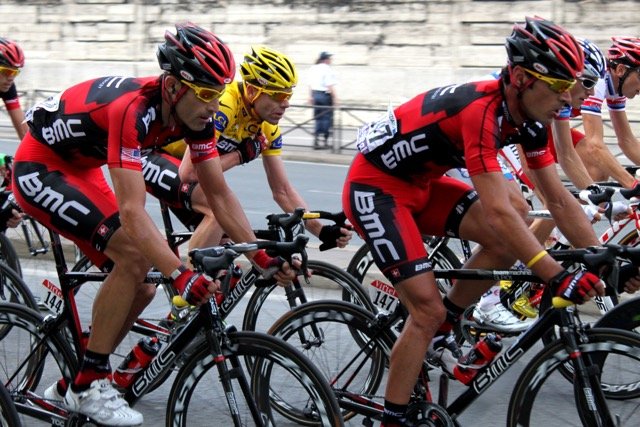
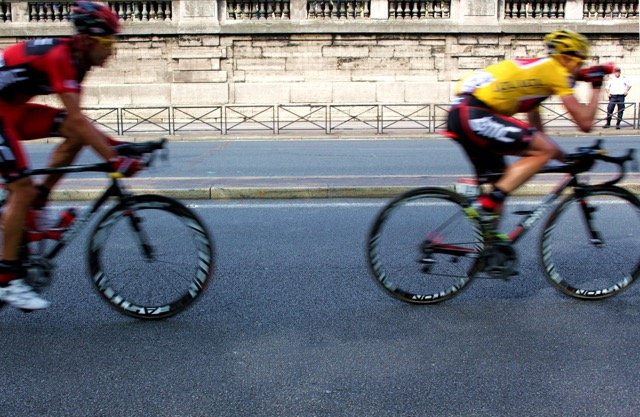
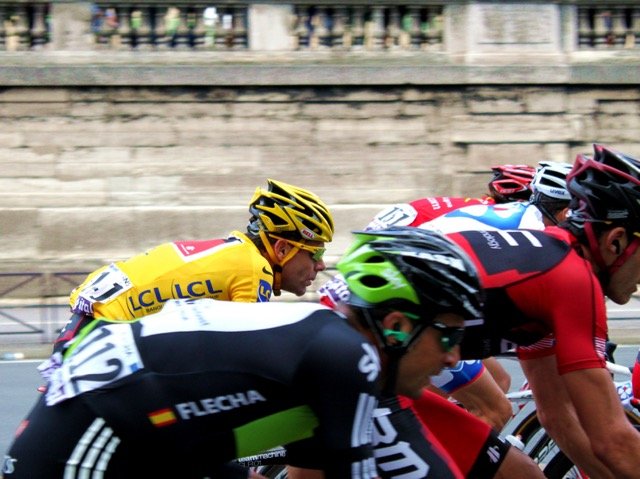
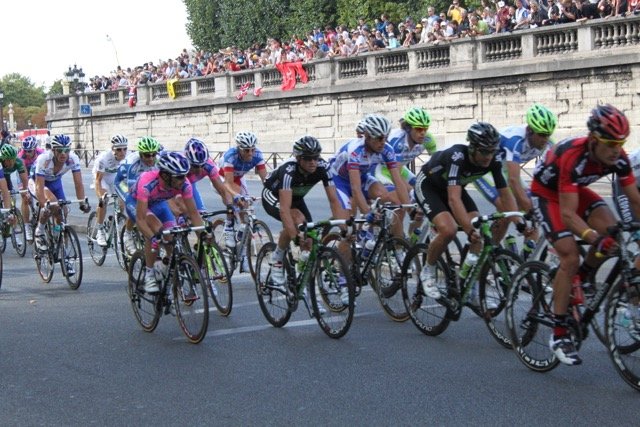
4. Find motivation in the jersey: There are four jerseys in the Tour. The Yellow Jersey is the overall leader, the best overall rider. The green jersey is for the best sprinter, and the polka-dot jersey is for the best climber. Lastly, the white jersey is awarded to the best rider under 25.
When riding indoors, pursue your jersey of choice, find some extra climbs and wear the polka dots. Or go for the yellow jersey and forgo any recovery periods, instead focusing on breath control. Only one rider, the great Eddie Merckxx, won all three jerseys in the same race! Merkckxx accomplished the feat in 1969 at the age of 24. He would have won the white jersey as well!
Photos by R. Nantel
5. Perfect your Form: Steve Jobs called the computer a bicycle for your mind. Jobs notes that humans fall in the lower third in terms of motion efficiency when we run. However, humans blow EVERY other species away when the medium changes to a bike.
When watching, look for riders with similar builds to yours. Or choose a team and focus on their riders. You will immediately notice the lowered handlebars, primarily for aerodynamics. Few of us have the core strength to pull our handlebars down as low as a professional, but relaxed shoulders, correct saddle position, and pedal intensity can be gleaned from watching a rider’s form. Creating those visual memories will give you the confidence to make changes on the bike.
Jered Gruber -- https://www.instagram.com/p/BHneui1A0lK/
6. The tour commentary is second to none. Do you think your cycling instructor/coach gives good advice? During one hour of the tour, you'll be taking notes, either mentally or in writing, and trying to incorporate them into your next ride. The broadcasts often share the audio between the team car and the riders, and the rider interviews can be insightful. I recommend listening to the Tour more than “watching.” The commentary provides sufficient detail, especially in the first half to three-quarters of the race. The climbing stages are the best. I’ll watch those intently. NBC Sports compiles a 30(-ish)-minute summary of each stage. Newbies should start there:)
HOW TO WATCH THE TOUR
In the United States, you can watch the Tour de France from July 5 to July 27 on Peacock. The Tour de France Femmes takes place from July 26 to August 3. Also available on Peacock
NO BLOGGING DURING THE TOUR. NEXT POST IS JULY 27th for the Tour de France Femmes.

